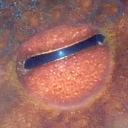Yahoo Answers is shutting down on May 4th, 2021 (Eastern Time) and beginning April 20th, 2021 (Eastern Time) the Yahoo Answers website will be in read-only mode. There will be no changes to other Yahoo properties or services, or your Yahoo account. You can find more information about the Yahoo Answers shutdown and how to download your data on this help page.
Trending News
What is the f-number of a lens with a 25 mm focal length and a 5.0-mm-diameter aperture?
3 Answers
- AlanLv 62 months ago
The job of the camera lens is to project an image of the outside world onto the surface of film or digital sensor. The brightness of this projected image is critical to the outcome of the resulting picture. Too dim and the picture will be underexposed. Too bright and the picture will be overexposed.
Now the lens acts light a light funnel. The larger the working diameter of the lens, the more light that will be captured, the brighter the image will be. We or the camera’s automation can control the working diameter of the camera lens. This is accomplished by adjusting the size of the entrance pupil. This adjustment is made using a variable diameter entrance called an iris. Named for the Greek goddess of the rainbow because this is colored portion of the human eye, the camera’s iris mimics the adjustable human eye entrance pupil.
The brightness of this projected image is the result of three factors. 1. Scene brightness 2. Working diameter (aperture) 3. Focal length.
The working diameter and scene brightness are obvious impacts. The focal length determines the projection distance inside the camera. Additionally, focal length determines the size of the image of objects. Short focal length yields a wide-angle view. The size of the image of objects will be tiny. Long focal lengths yield a narrow angle of view that enlargers (magnifies) the size of the image of objects.
Because focal length changes the image magnification, it also greatly impacts image brightness. If we double the focal length, the size of the image of objects also doubles. This doubling of image size come with a price. Each doubling of the focal length reduces image brightness four-fold.
Stated differently, image brightness optically intertwined the working diameter with focal length. What is needed is an easy way to handle this complex math.
Ratio to the rescue. We divide the focal length by the working diameter to calculate a focal ratio (f-number). This is an important concept because the f-number is a ratio and ratios are dimensionless. For example --- a 25mm focal length lens with a 5mm working diameter has a focal ratio of 25 ÷ 5 = 5 (written as f/5.
The f-number is important because it is a universal value. Any lens operating at f/5 delivers the same image brightness regardless of diameter of working diameter. A lens 25 centimeters focal length with a d of 5 centimeters diameter delivers the same image brightness as does a lens 25 inches in focal length with a diameter of 5 inches.
The f-number system is thus universal, a system without fixed dimensions. The f-number system is based on a doubling or halving of image brightness. In other words 2X changes.
The f-number set in 2X brightness increments from bright to dim:
f/1 – f/1.4 – f/2 – f/2.8 – f/4 – f/5.6 – f/8 – f/11 – f/16 – f/22 – f/32 – f/45 – f/64







